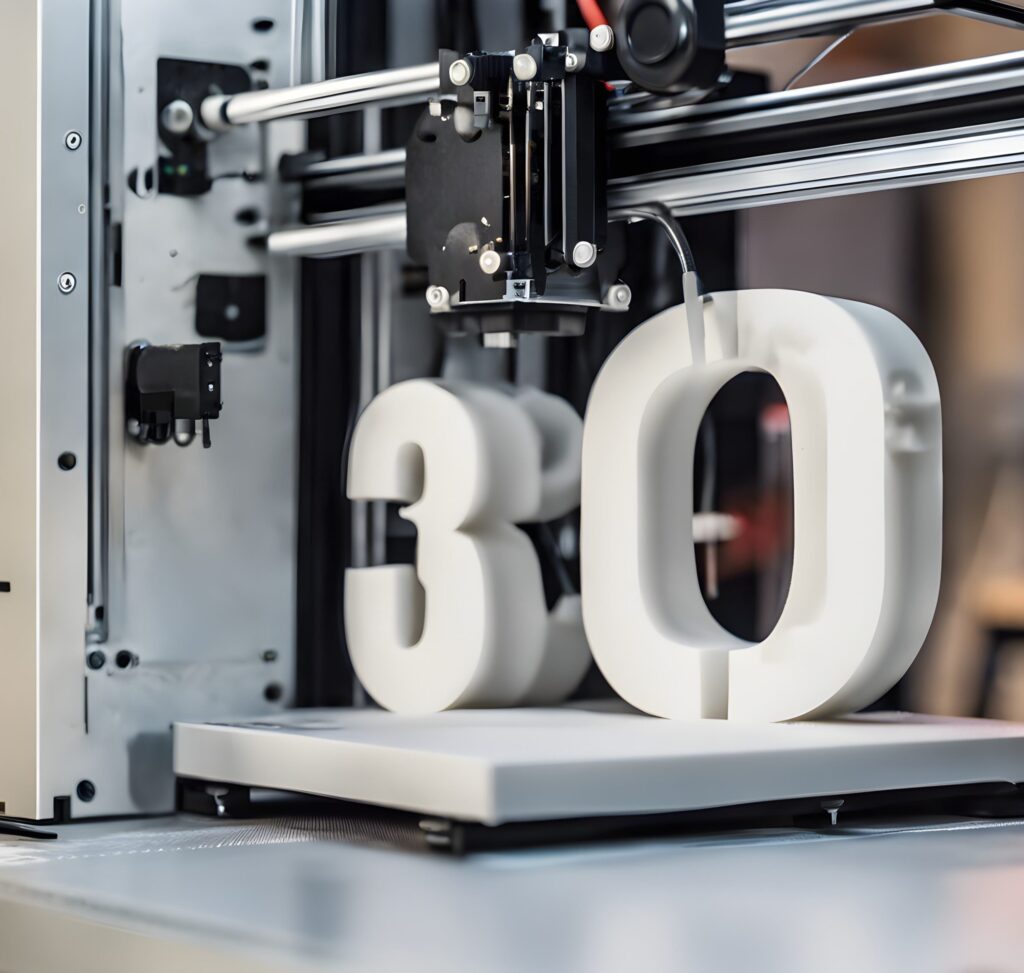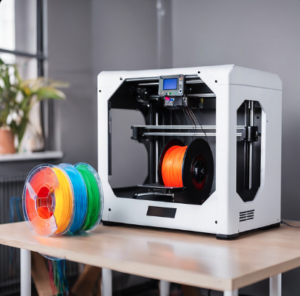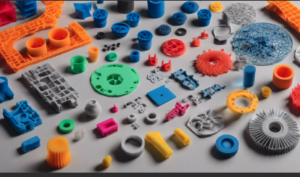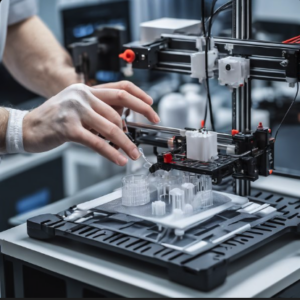Advances in Material Science for 3D Printing Technologies

3D printing, or additive manufacturing (AM), has rapidly evolved from a niche technology used for prototyping to a groundbreaking tool transforming multiple industries. As 3D printing has advanced, so too has the material science that supports it. The development of new materials has enabled 3D printing to move beyond simple plastic parts to high-performance components used in aerospace, healthcare, automotive, fashion, and more. In this article, we explore the innovations in material science for 3D printing, the types of materials currently used, and the future potential of this exciting field.
1. Introduction to 3D Printing Materials
The world of 3D printing is vast, with various technologies each requiring specific materials. The most common 3D printing methods—Fused Deposition Modeling (FDM), Stereolithography (SLA), and Selective Laser Sintering (SLS)—all rely on different materials, each with its own set of properties and applications.
- FDM is the most accessible and commonly used 3D printing technology. It uses thermoplastic materials like PLA (Polylactic Acid), ABS (Acrylonitrile Butadiene Styrene), and PETG (Polyethylene Terephthalate Glycol). These materials are melted and extruded to create layers of the printed object.
- SLA utilizes liquid resins that are cured layer by layer with a laser. Resins are available in a variety of forms, including standard, tough, and flexible varieties.
- SLS works with powdered materials, typically plastic powders like Nylon or metal powders such as titanium, stainless steel, and aluminum. A laser sinters the powder to build up the object layer by layer.
The choice of material directly influences the quality, durability, and functionality of the printed object. As such, the material science behind 3D printing is pivotal to unlocking new applications across various industries.
2. Key Categories of 3D Printing Materials
To understand the role of material science in 3D printing, it is essential to break down the major categories of materials used across different 3D printing technologies.
Thermoplastics (e.g., PLA, ABS, PETG)
Thermoplastics are the most common materials used in FDM 3D printing. These materials are solid at room temperature but can be melted when heated, making them ideal for extrusion-based printing. Some of the most popular thermoplastics include:
-
PLA (Polylactic Acid): PLA is a biodegradable plastic made from renewable resources like corn starch or sugarcane. It’s one of the easiest materials to print with, making it popular for beginners and hobbyists. However, PLA’s strength and temperature resistance are relatively low, limiting its use in industrial applications.
-
ABS (Acrylonitrile Butadiene Styrene): ABS is more durable and heat-resistant than PLA. It’s often used for functional prototypes and automotive parts. However, ABS requires a heated bed and proper ventilation due to the fumes it emits during printing.
-
PETG (Polyethylene Terephthalate Glycol): PETG combines the benefits of both PLA and ABS. It’s durable, flexible, and resistant to impact and moisture, making it a versatile material for a range of applications, from mechanical parts to food containers.
Resins (e.g., Standard, Tough, Flexible)
SLA printing relies on liquid resins that are cured by a UV laser or light source. Resins come in a variety of types, each suited for specific applications:
-
Standard Resins: These are the most basic type of resin, used for general prototyping and producing objects with fine details. They are ideal for creating models, figurines, or intricate designs.
-
Tough Resins: Tough resins are engineered to replicate the properties of ABS, offering increased strength, durability, and impact resistance. These are used in more demanding applications where functional parts need to withstand mechanical stress.
-
Flexible Resins: As the name suggests, flexible resins are used to produce objects that need to bend or compress. These are commonly used in applications such as footwear prototypes, flexible seals, and certain medical devices.
Powder-Based Materials (e.g., Nylon, Metal Alloys)
Powder-based 3D printing methods, particularly SLS, involve the use of powdered materials. These materials are heated by a laser and sintered (fused together) to form solid layers. Two of the most widely used powder-based materials are:
-
Nylon (Polyamide): Nylon is a versatile and durable material, commonly used in SLS 3D printing. It is highly resistant to wear, impact, and abrasion, making it ideal for functional parts and tools. Nylon is also lightweight and flexible, allowing it to be used in a variety of applications, including automotive and aerospace components.
-
Metal Alloys: 3D printing with metal alloys such as titanium, stainless steel, and aluminum has seen significant growth in recent years. These materials are used in high-performance applications, such as aerospace, medical implants, and complex engineering parts. Metal 3D printing allows for the creation of highly intricate geometries that would be difficult or impossible to achieve with traditional manufacturing methods.
Composites and Hybrid Materials
Composites are materials made by combining two or more materials to produce a material with enhanced properties. In 3D printing, composite materials often combine thermoplastics with reinforcing materials like carbon fiber, glass fiber, or kevlar to improve strength, stiffness, and durability.
-
Carbon Fiber Reinforced Filaments: These filaments, typically combined with PLA, ABS, or nylon, offer improved strength and stiffness without adding significant weight. Carbon fiber composites are commonly used in automotive, aerospace, and robotics industries for parts that need to withstand high stresses and weight constraints.
-
Glass Fiber and Kevlar Composites: These composites offer even higher strength and impact resistance, making them suitable for functional components in industries such as manufacturing and construction.
3. Innovations in 3D Printing Materials
Material science for 3D printing has witnessed remarkable innovations in recent years. These advances have pushed the boundaries of what 3D printing can achieve, allowing for more specialized, durable, and environmentally friendly materials.
Advanced Polymers
Advanced polymers, such as PEEK (Polyetheretherketone), PEKK (Polyetherketoneketone), and ULTEM (Polyetherimide), are high-performance thermoplastics that are gaining traction in industries like aerospace, automotive, and medical. These materials offer superior heat resistance, chemical resistance, and mechanical properties, making them suitable for demanding applications.
-
PEEK: Often referred to as the “super plastic,” PEEK can withstand extreme temperatures (up to 480°F or 250°C) and is used in industries like aerospace and medical for manufacturing lightweight, high-strength parts. PEEK is biocompatible, which makes it ideal for implants and prosthetics.
-
PEKK: Similar to PEEK but with additional chemical resistance, PEKK is used in industries requiring extreme durability and resistance to harsh chemicals and high temperatures.
-
ULTEM: Known for its electrical insulating properties, ULTEM is used for creating components that need to perform well in high-heat environments, such as aerospace and automotive applications.
Metal 3D Printing
Metal 3D printing has seen significant advances, especially in terms of material properties and available metal types. Materials like titanium, stainless steel, and cobalt-chromium are now widely used in industries such as aerospace, defense, and medical for creating lightweight, strong, and intricate parts.
-
Titanium: Known for its exceptional strength-to-weight ratio, titanium is commonly used in aerospace and medical implants. It is also highly corrosion-resistant, making it suitable for environments where longevity and reliability are critical.
-
Stainless Steel: Used for creating robust, durable parts, stainless steel is one of the most popular metal 3D printing materials. It’s commonly used in automotive and industrial applications where corrosion resistance and mechanical strength are required.
Biodegradable Materials
With the increasing emphasis on sustainability, there has been a shift towards biodegradable materials in 3D printing. PLA is one of the most popular biodegradable filaments, derived from renewable sources like corn starch or sugarcane. However, new biodegradable filaments and materials are being developed to reduce plastic waste and improve the environmental impact of 3D printing.
Smart Materials
Smart materials that change properties in response to external stimuli, such as temperature, light, or pressure, are opening new possibilities for 3D printing. Shape-memory alloys (such as Nitinol) and thermochromic materials are becoming more prevalent in the 3D printing world. These materials can “remember” a shape and return to it when triggered by changes in temperature or pressure.
4. Material Customization and 3D Printing for Specific Industries
As 3D printing continues to evolve, so too does the need for materials tailored to specific industry requirements. Here are a few examples of how advanced materials are being customized for specialized uses.
Aerospace
The aerospace industry has been at the forefront of 3D printing adoption. Advanced polymers, titanium, and other high-performance materials are used to produce lightweight yet strong components for aircraft and spacecraft. These materials help reduce the overall weight of the aircraft, improving fuel efficiency and reducing costs.
Medical and Healthcare
One of the most promising applications of 3D printing is in the medical field. Advanced biocompatible materials are being used to create personalized prosthetics, implants, and surgical tools. Materials like titanium and PEEK are often used for implants due to their strength and compatibility with human tissue. In addition, flexible resins are used to create medical devices that can mimic the softness of human tissues.
Automotive
The automotive industry is increasingly turning to 3D printing to produce functional parts with high precision. Advanced materials such as carbon fiber composites and lightweight metals are used for components such as engine parts, frames, and interior elements.
Consumer Products
The development of customizable and sustainable materials has led to a boom in 3D printed consumer goods, such as footwear, fashion accessories, and custom electronics. Innovations in materials have made it possible to create everything from tailor-made eyewear to customized shoes, providing customers with unique, personalized products.
5. Challenges in 3D Printing Materials Development
While material science has come a long way, there are still challenges to overcome.
-
Material Costs: Advanced materials such as high-performance polymers and metal alloys are expensive, which can make 3D printing less cost-effective for mass production.
-
Material Properties: Achieving the right balance between strength, flexibility, and durability for specific applications remains a challenge, especially in industries that demand high-performance components.
-
Standardization and Certification: In industries like aerospace and healthcare, materials used in 3D printing must meet strict standards and certifications. The certification process for new materials can be lengthy and costly, hindering the widespread adoption of certain technologies.
6. The Future of Material Science in 3D Printing
As material science continues to evolve, the future of 3D printing looks bright. Emerging trends, such as multi-material printing and bio-printing, hold the promise of even more diverse applications across industries. Additionally, sustainable materials, such as biodegradable filaments and recycled plastics, will play a crucial role in making 3D printing more eco-friendly.
In the coming years, material science will likely unlock new possibilities for 3D printing, pushing the boundaries of what’s possible and enabling the production of even more complex, functional, and sustainable objects.
Material science is at the heart of 3D printing’s rapid evolution. As new materials are developed, the potential applications for 3D printing grow, allowing industries to create parts that are stronger, more versatile, and more sustainable. From high-performance polymers in aerospace to biocompatible materials in healthcare, the advancements in material science are setting the stage for a future where 3D printing becomes a mainstream manufacturing tool. As research continues, we can expect even more innovations that will change the way we design, create, and manufacture in the years to come.
Visit our other website: https://synergypublish.com







